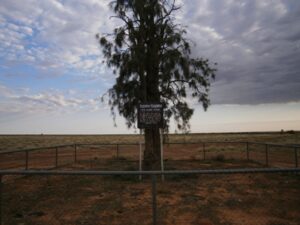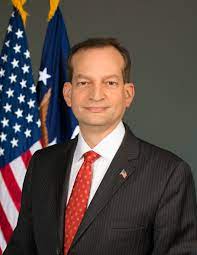In this week of our National Day and following on my account of “give us our daily” Quinoa Day, I have taken this account from the Washington Post, which shows the dark shadows of the USA, which course across the Lone Star State. It is as though among the Ghost riders there is one; an unhappy emaciated soul called Mean Spirit.
Texas’s Confederate Heroes Day is not some relic of the Civil War, or even Reconstruction. It came to life out of the backlash to Black Texas lawmakers daring to ask for a Black freedom fighter to be honoured by the state.
As recounted in a lengthy story in Texas Monthly, it all began in 1973, when eight Black representatives joined the Texas House, the highest number since Reconstruction.

One of them, 34-year-old Senfronia Thompson, introduced a bill to urge the State to recognize the Jan. 15 birthday of the Rev. Martin Luther King Jr. as an honorary holiday, but without the full bells and whistles of a taxpayer-funded day off for public employees. White Republican lawmakers opposed the bill, some claiming that Texas didn’t need any more state holidays and memorials, and that King wasn’t deserving of state holiday recognition because he wasn’t from Texas.
But state of birth did not stop Texas legislators from shortly after passing a bill to memorialize Jefferson Davis and Robert E. Lee on Lee’s birthday, Jan. 19, under the name Confederate Heroes Day. It was absurd enough that the House responded to Black lawmakers with an utterly un-American celebration of Confederate traitors, enslavers, racists and, above all, literal losers. But neither Davis nor Lee was even Texan!
A Touch of the Acerbic
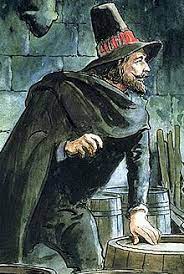
It seems to be lodged in the tangle of the Serbian helix that vaccination is in some ways a plot and conspiracy. We have the aptly-named Senator Antic, whose lineage extends back from Adelaide to village life along the Sava, and he is one of the anti-vaxxer pests. At some stage, the Australian senate will have to be expunged of this gaggle of Trumpians. These are people who believe their shadows are an invention of the CIA, designed to track them. Paul Keating was very right when he described the Senate as unrepresentative swill. Only it is worse, it is now the Chamber of the Fawkesian Trolls.
Djokovic went with a degree of dignity, but then he had been afforded the full Federal Court at short notice on a weekend to adjudicate. Not that the cost of the whole circus would make much of a dent in his estimated USD220m fortune. He does not live in Belgrade, but in Monte Carlo, so that in line with devotion to Serbia, he is minimising the amount of his wealth that goes into the Serbian Treasury to be dispensed at the whim of the Serbian government. All a matter of perspective.
Djokovic has defaulted from a Grand Slam before. In the 2020 US Open, in one of his “hissy fits” he swatted a ball carelessly – it struck the throat of a lineswoman. She needed treatment; and Djokovic was shown the door. Under COVID rules there was no crowd to view this unfortunate incident; and as far as I am aware there were no extravagant comments by his parents.
Ageing Novak now is learning the meaning of the axiom – autonomy of action is inversely proportional to the controversy generated. President Macron has jumped on the anti-vaxxer bandwagon, and after stating he will “piss off” French anti-vaxxers, he has now included a provisional ban on tennis players who are unvaccinated saying they will be barred from the French Open and indeed any tournament in France. Given that he lives in a French enclave, a ban such as this will constrict any of Novak’s activity in competitions
He has wealth to back up his sense of entitlement. Yet, who knows. The storm clouds are gathering over Europe; and Serbia is considered to be closer to Russia than its Balkan neighbours, apart from Montenegro.
Nevertheless, there has always been some ambivalence in the relationship. One anecdote sticks in my mind. After Tito split with Stalin, Stalin sent a number of assassins to kill Tito, but they failed, and Tito wrote back to Stalin saying he would send one in retaliation so Stalin would not need to send another. The attempts on Tito’s life stopped. It may say something about the tenuous balance between bully and bluff.
Currently, Putin is playing war games over Ukraine; and one area where sanctions could be inflicted is in the world of tennis. After all, in last year’s Australian Open three of the eight quarter finalists were Russian.
Nothing happened over the annexation of Crimea and Trump, in his Presidency, showed himself to be in Putin’s pocket, damping down any US reaction to Russian machinations, whether on terra firma or in cyberspace.
But life may just be getting a little different.
Thus, big things start in seemingly minor Serbian disputes. Just remember that this may be the year tennis lost its political innocence.
Aboriginal Circumcision
In the Jewish and more recently Muslim communities there are organised ritual circumcisers. The difficulties which one Muslim community had with circumcision were highlighted in my last blog.
Once, in Australian society, and certainly in my generation, most boys were circumcised. As one of my contemporaries said to me, “I did hundreds of them during my time in obstetrics.” However, circumcision has fallen out of favour among the paediatricians as unnecessary and even classified as mutilation. In several States circumcision, unless for specific medical reasons, is banned in public hospitals.
Ritual circumcision has been part of the initiation rites of Aboriginal males in Northern Australia and extends among the Desert tribes. As the ritual is shrouded in secrecy, there is no evidence that there is a dedicated ritual circumciser. Nevertheless, the procedure must demand a degree of skill, whether using sharpened stone or razor. Among these Northern tribes, there are other concomitant procedures such as the scarification of the chest and knocking out one of the front teeth.
As Thomas Worsnop observed in his 1897 book, “The Aborigines of Australia” concerning Aboriginal youth initiation, “He has to undergo a terrible formulary of days, even weeks where he must bear with unwavering fortitude, together with the lesser pains of hunger and sleeplessness, intended as a test of his endurance and aptitude to receive the special secrets of the tribe prior to his endowment with the privileges of manhood and of its subsequent duties and responsibilities.”
While much of the initiation was done out of sight of whitefellas, there was obviously a significance in these rites which I wonder how they have been reconciled in a modern society. After all, we still see Aboriginal people, both male and female, of all ages, daubed with ochre engaging in what are stated as traditional ceremonies. Thus, where does the retention of tradition cope with practices which, in modern day, may be thought of as mutilation by a large section of the population.
Circumcision being adopted from elsewhere does not explain the use of subincision where the urethra is slit open. This seems to be unique to Australian aboriginals; but its level of use in initiation is unclear. Nevertheless, such an operation demands a level of skill to be successful.
There is a morbidity associated with the operation, but it is rarely reported. A friend described one situation where the initiate had a severe infection, and how my friend used a succession of salt baths to tackle the problem, in the absence of antibiotics. The youth’s penis healed, but the more one delves into the issue, the more questions are raised. What is the level of debate because inevitably, if it has not already happened, death following such a practice must occur and therefore a major question is whether the benefits outweigh the risks?
In any event, circumcision was not practised in southern Australia and was completely unknown among Tasmanian aborigines. Although the mantra is that the practice goes back thousands of years, it is not universally undertaken across Australia by the various tribes.
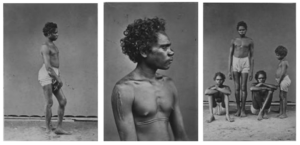
From the 13th through the 17th century, it should be recognised that Sunni Islam was chiefly spread widely by Arab and Indian merchants through the East Indies. One theory is that Aboriginal circumcision is a relatively recent practice adopted around four hundred years ago from the Malays, who came to harvest trepang or sea cucumber, the trochus shell and wild nutmeg. It is one explanation but does not seem to be the only one as circumcision was undertaken far from any Malay influence in the central deserts.
For each of us there is often a fine line between beautification and mutilation. One instance for me of this line between enhancement (if not beautification) or not is the facial tattoo. I find it confronting. But then I do not like tattoos. It is also said that much of religious belief rests on confronting this dilemma. A strange triangle emerges, depending on the eyes of the beholder.
The question always must arise as to whether the family or tribal customs prevail; or when is tribal ritual rendered void by society as a whole. At least in relation to ritual circumcision, there is a case for rules even if it continues to be undertaken.
As I’ve alluded to previously, I remember being taken by a male elder to an Aboriginal quarry, where there were hundreds upon hundreds of sharpened stones lying around on the earth. There was a white woman with us. I turned to him and said: “This is men’s business,” He looked hard back at me and said, “I don’t care. Ever since the young men moved the corroboree stones to do burnouts then the link was broken.” He did not need to say more; yet the Aboriginal women elders in the community still did not know about the quarry – and he had let a white woman accompany us.
Albored the Unready – Part 2

I would bet that the first act Whitlam would have done if he came to power this year would be to restore the Sri Lankan family to Biloela. There is similar advocacy by Kristina Keneally, but she is not the leader. However, one question which haunts me is whether, in the compassion and sensitivity stakes, Albanese is any different from Morrison. Albanese is too much a party flack, as was Morrison – hardly lived a life outside the carapace of nastiness that factional politics provides. At the same time, Albanese could release the other asylum detainees from the other sites, including the Lygon Guantánamo. The paranoia generated by the transit of ISIS should have subsided.
Instead of spending money on their incarceration, the government could encourage these men to join the depleted Australian workforce. And if anybody bleats that this will be an invitation to the people smugglers, the obvious response would be to ask what the hell has the Australian government being doing over the past 30 years to counter them being around. Albanese could identify this as an example of a literally petrified government and indicate that he will free all the detainees on provisional visas and set work conditions for them. Get transitional arrangements right – and do it swiftly, not after the event as has been the modus operandi of the current Government.
Albanese is so predictable. He promises money for education. It is either hospitals or schools – with creative edges. Like all of these promises the problem is that it has all been heard before. Remember the Gillard Historic Education Agreement of 2008, with all its segments promising a new education horizon. That is the problem – promises of a renewal without any implementation plan are one of the major causes of this country’s policy inaction. The Government is already pointing out the deficiency of the previous policy, instead of emphasising the positive.
Shorten, when leader proposed perfectly reasonable modest adjustments to taxes, but had both an appalling policy salesman in Chris Bowen and was assailed on all sides by the right-wing media. The problem with Albanese is shown in the nostalgia of his own brief tenure as Federal transport minister. He in his own mind was successful. The question is whether others agree with that summation
Again, he needs a carefully crafted transport policy directed towards immediate structural needs. There are many uncosted dreams floating about, especially involving train lines and super-fast rail, which are notorious for creating “South Sea bubbles” coupled with speculation in the land along any proposed routes.
Albanese’s attack should be concentrated is on the corrupt behaviour of government. The list of rorts has wide currency and each one deserves a clear indication of what Albanese proposes to do to repair the damage, even if it is only to give probity to governmental intentions.
Morrison has had the opportunity of sacking the worst of his ministerial clowns. One of Morrison’s weaknesses has been to keep the underperforming rather than sack them. It has thus reinforced the incompetency of the Government, overridden by the fear that if he sacked anybody there would automatically be a “sack” faction built to dispose of him. But then Morrison should know; he has been sacked more often than most people.
This time for Albanese the task is obvious – a government which has been corrupt at so many levels; a prime minister who both verges on the pathological in his ability to conjure up his own reality and who has overseen a totally inept bureaucracy full of political dullards. Whether that analysis is true, it has enough truth to drive him to promise to set up an Anti-Corruption Commission, with wide sweeping powers, but from its inception there must be a promise to ensure that all its findings are made public.
Learn the lesson from the Banking Royal Commission. Changing the underlying attitudes if you are to enforce behavioural changes is an ongoing business, otherwise it will end up being more of the same, despite threadbare assurances to the contrary, as has happened.
As important as anything on day one is to have the appointment of the Head decided, so they can be appointed immediately on winning the election. There is a huge menu of malfeasance to be examined, but out of each example a policy adjustment will be needed.
The menu for the cases to be considered should be carefully ordered, so that if there are recommendations, they have a logic in dealing with them, to eliminate personal bias as far as possible. For instance, the car park boondoggle. The immediate task is to obtain a list and put all the construction on hold and pinpoint the trail of decision making.
Of greater concern is what has occurred with the $443m set aside for the Great Barrier Reef Foundation. What have they done, given the reservations voiced by National Audit Office; and as another example of the failure of the private-public model.
In all, the instances of corruption of the Morrison Government provide lush pastures, and inter alia for Albanese they provide the opportunity to raise the matter of tax in the most brutal fashion, namely amid the corruption there is the disparity in wealth across the country such as to beg tax reform. The problem is that the Labor Party is the face of the hotel industry, particularly beholden to it in NSW. This means gambling has to be protected, areas of wealth, where the major casualties are the traditional Labor constituency. So, this area is left to the Greens and the rising bunch of independents, who may well break through in this election as the most formidable influence to advocate reform. Not a good look for the freshly coiffed Albanese.
I have far more concern with the image of Albanese the person than a superficial makeover.
Unfortunately, I have viewed the parliamentary footage of his scowl when he urges Catherine King, the then Shadow Minister to “smash her” when referring to the then Minister of Health, Sussan Ley. It is a most disturbing image of the Man who wants to be Prime Minister.
 Morrison has cultivated the image of the family man who consults his wife, and treasures his children, Albanese is a divorced man with a tearaway son, Nathan. He was married to a fellow politician.
Morrison has cultivated the image of the family man who consults his wife, and treasures his children, Albanese is a divorced man with a tearaway son, Nathan. He was married to a fellow politician.
I am put in mind of the entrapment of Kevin Rudd by a Murdoch operative in a drunken 2003 visit to Scores, a strip club in New York. There will be a hunt on for a similar indiscretions by Albanese. In this case, contrast with Morrison’s wholesome domesticity is important to his political enemies
On the other hand, Andrew Probyn’s seemingly innocent question at the National Press Club of who Albanese really is, was irresistible to Albanese, who loves recounting his “log cabin” story. It had better be correct, because you can bet that the Morrison camp will be looking for any Albanese lie, however minor, to neutralise the Prime Minister’s pathology in this regard.
Will there be a Part 3? I wonder if there is much more to say.
A different Fox in the Political Farmyard
Prince Rupert was seen reflectively choking over his breakfast of caprine sweetbreads and roasted cervine gall bladders when he read advice to the Democrats from the Lincoln Project – the group of disaffected former Republican insiders:
- Drive the damn bus, don’t lay down in front of it. Frame your opponent early, and repeat, repeat, repeat.

Drivin’ the damn bus - Don’t bring a policy pen to a knife fight. All of us – particularly my friends in the Democratic Party – need to stop thinking that the road to glory is paved with policy. We are in a culture war. You win culture wars on emotion and spectacle.
- Never catch the grenade. The Republican playbook is to lob some crazy attack on the Dems and then just sit back, watch, and enjoy. The Dems catch a grenade like Critical Race Theory as if it’s a bouquet, bobble it around giving it weeks of play, until boom, it blows off another limb.
- Have some damn fun and stop worrying about everything. Sometimes I feel like I’m watching a poor gopher trying to undig its own hole, seeing one of my Democratic friends tiptoe around making a point without offending anyone.
- Sell your wins, and back your own. Today too many Democrats mumble their wins, bury their heads, and hash each other mercilessly rather than fall in line as allies against the true threat. My Democratic friends need to shout their victories from the mountaintops, bite their tongues when they don’t agree, and start having a good time again.
Muscular politics? Certainly! An antidote to what David Owen once said to me, before the rise of Prince Rupert, about the soggy centre of the political spectrum.
If I sat down with Grace Tame
Grace, what were you thinking?
Grace Tame, you are a remarkable young lady in that you have weaponised the response to the hypocrisy of government in preaching sexual equality and yet doing nothing about it. The problem with activism and especially when you are disturbing the status quo of a society run by representatives of the comfortable privately schooled, middle class. While you were the hunter, then you had many followers. Some of those will be so fickle that they will desert when you are perceived as having lost “the authority of Diana.”
This Prime Minister inflicted on Australia, if nothing more, knows how public relations worked. So when you have disdain and you publicly show it, Morrison has been waiting with the wedged response. Gushing all over you when it is so easy for you to be portrayed as churlish by those critics who emerge from the shadows – and surprise, surprise, they ride out from the Murdoch Press.
By your understandable but unnecessary action, you may well have diminished your ongoing effect as being characterised as an ALP stooge every time you open your mouth. The criticism will come at different cadences. Slights are a favourite ploy of the Establishment – for instance your successor as Australian of the Year concurrently received an AO: you, Grace Tame, zilch.
Time to regroup Grace. I disagree with those who say you do not need advice. Everyone needs advice; it is part of being a member of a community. Whether you take it is your choice. Make sure of your friends, and how far they are prepared to follow you into the murkiness of sexual exploitation and degradation of woman. What you had before the Morrison wedge was a persona where the nasty political types could not touch you.
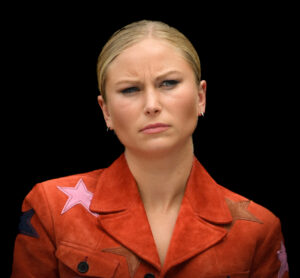
You are tough; if you mix it in politics, a touch of the paranoias does not go astray either. You are likely to be engulfed in the Alcott story, with him exacting from government promises to advance the disadvantaged – a very admirable objective with presumably him having a prominent role.
Grace, you need to put yourself into the brain of the enemy. You need a cohort of Australians to stand with you to develop a series of local sanctuaries for those who flee from abusive arrangements. But maybe you have other strategies to augment your devastating rhetoric. But you are now a different person from the one who met the Prime Minister on the eve of Australia Day.
Over 40 years ago, I was faced with the distribution of Federal money provided for a number of community projects. One was for a women’s refuge, and at that time the Victorian Department of Health was headed by a very conservative Roman Catholic bureaucrat, one of the many Roman Catholics who found employment in the lowly denizens of the public service in the thirties and forties, but moved upwards until they together occupied powerful positions in the bureaucracy.
If the Departmental Head had known about the project at the time, when being an assertive woman and moreover a feminist meant a difficult passage given the ultimate funding decision was made by a conservative male-dominated bureaucracy – us two, it may well have gone nowhere. The appearance of two short-haired women wearing leather jackets in our office. So what? They put their case; it was a no brainer. They got their money and we got it out before any in the hierarchy could object. I’m afraid that is my only credential in a field where there are other instances of which, in hindsight, I am not that proud.
In the intervening years much has changed. Therefore, Grace, it is essential you continue to succeed.
Mouse Whisper
When my field mice relatives amble around the Coonawarra vineyards, their paws get soiled by the terroir rouge; and in the Italian vineyards it’s terra rossa in which miei parenti topi leave their tracks.
But in the Valley of Paraibo between Rio de Janeiro and São Paulo, where a substantial amount of the world’s coffee is grown, the soil is known as “terra roxa”. However, in Portuguese, the word for red is “velmelha.” “Roxa” translate as purple. Nobody worries; sounds right, even if the soil is not the colour of aubergine.


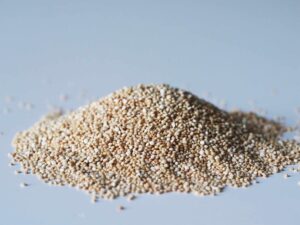
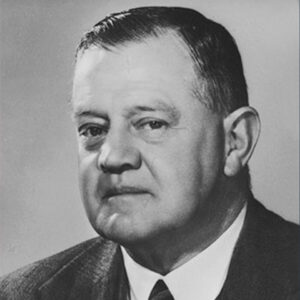
 One last piece of advice – look at the past record of potential senior health executives. Look at what constituted a successful health executive in the past – Bernie Amos, William Refshauge, Bernie Mackay, Chris Brook. These are the role models that come to mind. However, beware of anybody who loves Albertan cookies – or the appointment of anybody else from overseas with such expertise.
One last piece of advice – look at the past record of potential senior health executives. Look at what constituted a successful health executive in the past – Bernie Amos, William Refshauge, Bernie Mackay, Chris Brook. These are the role models that come to mind. However, beware of anybody who loves Albertan cookies – or the appointment of anybody else from overseas with such expertise.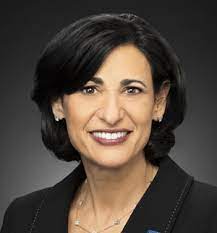
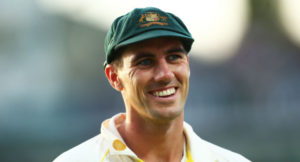

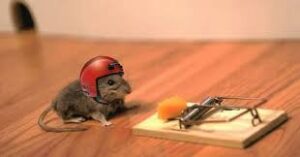
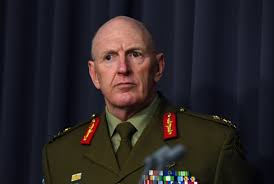


 The Chief, having recovered from the initial surprise, had reached into his pocket in a studied way to produce his pipe and tobacco pouch. It was his reaction to what he saw as evidence of American bravado. By this time, the deck had filled with a few more passengers wondering what on earth was happening.
The Chief, having recovered from the initial surprise, had reached into his pocket in a studied way to produce his pipe and tobacco pouch. It was his reaction to what he saw as evidence of American bravado. By this time, the deck had filled with a few more passengers wondering what on earth was happening.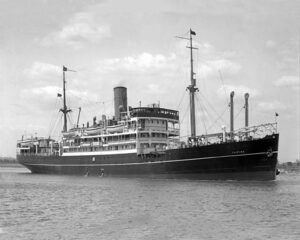
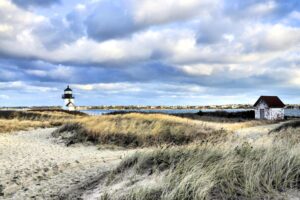
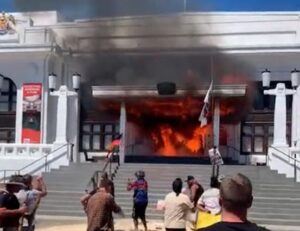 One could argue the tent embassy outside Old Parliament House has outlived its time. I was there, sitting around the campfire with Charlie Perkins in 1973, outside Parliament House. Charlie was not short on being able to handle the media. Ever since he had been involved in the Freedom Rides in the 1960s in country NSW, Charles had been very much the face of Aboriginal activism. He was brilliant in his use of symbolism, and the simple campfire outside Parliament House emphasised very much the traditional myth of Australian egalitarianism – mateship.
One could argue the tent embassy outside Old Parliament House has outlived its time. I was there, sitting around the campfire with Charlie Perkins in 1973, outside Parliament House. Charlie was not short on being able to handle the media. Ever since he had been involved in the Freedom Rides in the 1960s in country NSW, Charles had been very much the face of Aboriginal activism. He was brilliant in his use of symbolism, and the simple campfire outside Parliament House emphasised very much the traditional myth of Australian egalitarianism – mateship.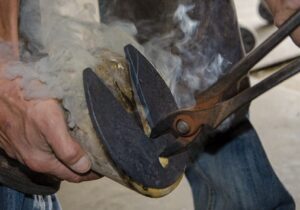

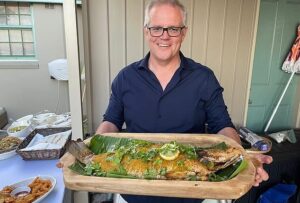




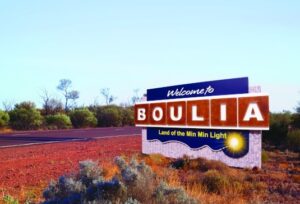 My memory of this time was jogged by the Boulia Shire sign, which appears in the opening credits of the ABC’s Backroads program. Not that I watch this very popular program much. I, like the ABC presenters, have visited many of the places they have gone to see, and they have their own perspective.
My memory of this time was jogged by the Boulia Shire sign, which appears in the opening credits of the ABC’s Backroads program. Not that I watch this very popular program much. I, like the ABC presenters, have visited many of the places they have gone to see, and they have their own perspective.
